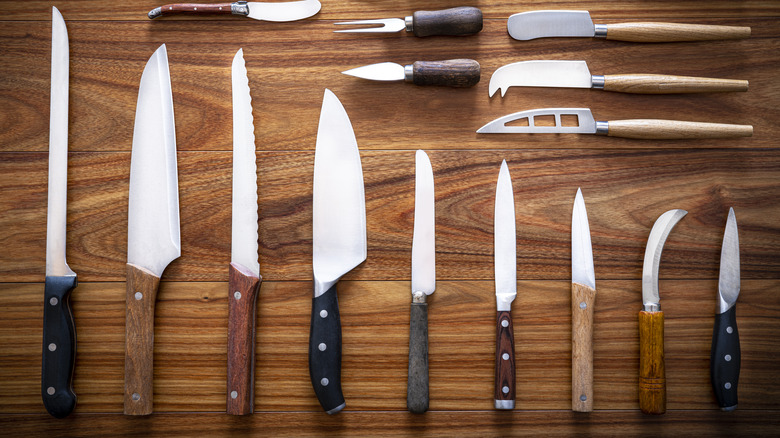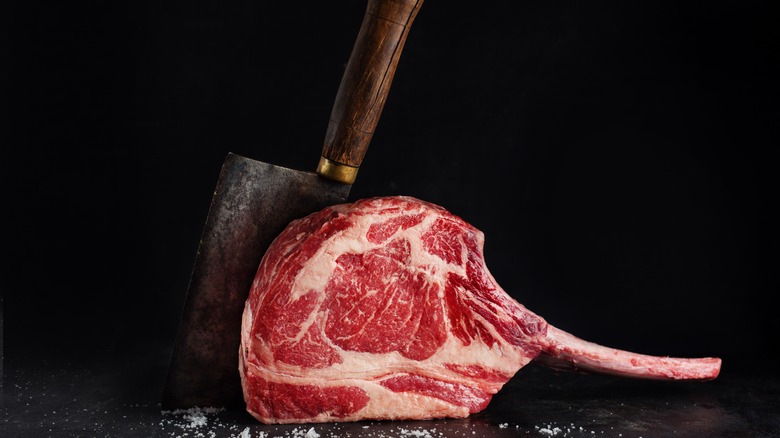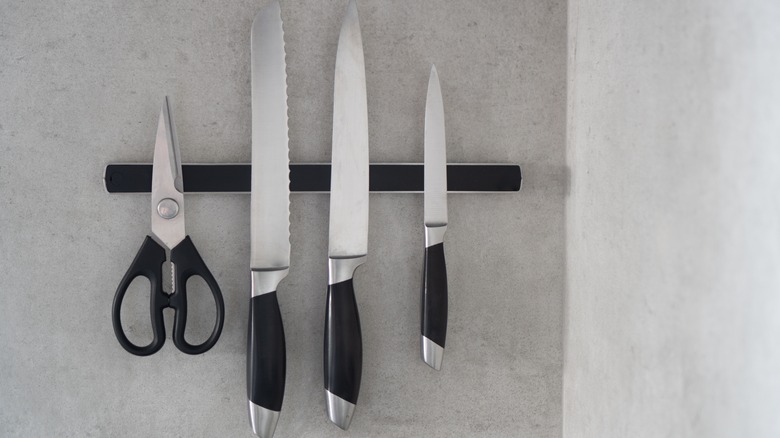What It Means When Kitchen Knives Are 'Full Tang'
There's arguably nothing that eases kitchen prep work more than having the right knives on hand. Common sense dictates that knives need to be sharp to avoid smashing ciabatta or squishing tomatoes, but another important characteristic to consider whether your knife is full tang.
A full tang knife features a single piece of steel running from the blade's tip all the way through to the handle's end. In contrast, a partial tang means the steel extends only partway through the handle. Knives with a partial tang are often lower in quality and, while less expensive, may also be less effective.
A major concern with partial tang knives is the risk of the blade becoming detached from the handle, particularly when you're doing heavy-duty kitchen tasks. A full tang knife, with steel secured throughout the handle, helps to lessen this risk, ensuring that the blade remains firmly in place when you're slicing.
It's worth investing in a full tang knife
The elimination of the safety hazard posed by a blade detaching from its handle is one clear advantage of using a full tang knife over a partial tang variety, but there are additional benefits as well. Although a full tang knife may cost a bit more up front, it can potentially save you money in the long run. The construction of a partial tang knife, being more susceptible to breakage, may not last as long as a full tang counterpart. Investing in a high-quality full tang knife can reduce the frequency of replacing your knives.
Furthermore, a full tang knife offers better balance than a partial tang knife. Since the steel extends through the entire handle, it's easier to use and manipulate. Whether you're aiming for uniform cuts when dicing onions, or requiring precision in butchering meat, you can count on a full tang knife to be up for the task.
How to take care of your knives
Once you've invested a decent amount of money in a good knife, naturally, you'll want it to last. Fortunately, there are a few basic steps you can take to ensure your knife has a long lifespan.
The primary rule in knife care is to avoid placing them in the dishwasher. During a dishwashing cycle, the blade can contact other kitchen tools, dulling its sharpness. While you can and should sharpen your knives, if one becomes chipped, replacement is necessary. Additionally, the high water temperature in a dishwasher can negatively affect the steel quality of your knife, an issue that doesn't occur with hand washing. Lastly, consider the potential handle damage: The dishwasher's environment can impact the appearance of your knife's handle, and it could also suffer damage if it falls out of place.
Proper storage is another key aspect of caring for your knives. To prevent damage from other tools, it's advisable to avoid drawers, if possible. While there is debate over the use of knife blocks, many agree that magnetic strips are an excellent choice. They not only save counter space but also keep knives safe and clean, ideally for many years.



